Cycle One: Immersive Theatre
Posted: April 3, 2025 Filed under: Uncategorized | Tags: adobe, cycle 1, immersive theatre, Isadora, premiere pro, theater, theatre Leave a comment »For cycle one, I wanted to take the tools I had been equipped with over the first half of the course and utilize them in a theatrical context.Knowing that I would only be working with a bite sized chunk of work, I decided to revisit a play I had developed in a composition class my first year. It was a 20-ish minute play called The Forgotten World of Juliette Warner. It is a piece that juxtaposes the heroine’s journey with the stages of Alzheimer’s diseases. A theatrical convention of this piece in its initial construction was an ever changing set, meant to reflect the mind of the titular character where nothing is truly settled. Having actor’s move literal mats and blocks constantly was a barrier when establishing the suspension of disbelief. So recently trained in projection mapping, I developed a score around mapping the environments and bringing the audience inside the world.
My original score:
Resources Needed:
- Software: Isadora
- Hardware: Projector, long HDMI cables
- Space & Physical Elements: MOLA access, boxes, rolling boards, or curtains
Steps to Achieve This:
- Organize blocks, rolling boards, or curtains in the MOLA space as the base setup.
- Map the projector to these surfaces.
- Design and program projections to depict the shifting realities of Juliette’s world.
- Create a control board in Isadora for ease of access.
- Source actors.
- Rehearse.
- Present.
In my original score, I had anticipated projecting onto flat surfaces and possibly a curtain. But after our Motion Lab Demonstration, I observed a track for curtains that ran circular which I was immediately drawn to. So the first two days, with the gracious help of my peer Michael, I worked to understand routing NDI sources to 3 projectors in the motion capture lab. Through trial and error, we overcame a major barrier on day 2. When sending an NDI signal over a closed internet connection, many computers such as mine, will not send the signal if a firewall is enabled. After disabling the firewall, I was off to the races.
In IsaDora, I utilized EJ McCarthy’s focus grid to understand how to canvas the curtains properly. This was a meticulous effort that took nearly a whole class. I find that I can often get so focused on the specifics of the work, that I forget to take a step back and look at the big picture. So towards the end of class, I threw up some stock footage on all 3 curtains and to my surprise, I found that nearly everything is more forgiving than the focus grid.

With my surfaces properly mapped for projection, it was time to turn to the script. This piece has always been one that makes me nervous because I want to handle this difficult subject matter with as much care as possible. So to avoid alienating my peers/the audience, I selected a brief snippet that occurs earlier in the play that revolves around a repeated daily occurrence, grabbing coffee. I felt that both the environment and the interaction would be familiar enough to put audiences at ease while also providing a great opportunity to show the evolution of Juliette’s mind. When writing this scene, I found that this scene occurred at these stages of the heroine’s Journey/Alzheimer’s development:
STAGE 3 – Noticeable Memory Difficulties (3A.The Awakening)
STAGE 4 – More Than Memory Loss (3B.Preparing for The Journey)
With one day left in class to work on this project, it was time to generate. Although I did not have this software initially in my score, I decided that Adobe Premiere Pro would be the best canvas to create this scene. I sourced stock footage and audio from both Adobe and Pixabay (an EXCELLENT source if you haven’t checked it out).
I had to source footage that could suggest a coffee shop without needing to be in full focus, I didn’t want the projections to be a focal point for the audience. I eventually settled on a nice loopable clip and to make the transition gradual, I then started the scene with a circular gaussian blur at the center and over the course of the 2 and half minute scene allowed it to encompass the entire video. I then created a sound design based on stock noises. With the audience being on the inside of the curtains, I felt it was important to not only surround them visually, but sonically. I utilized surrounding reverbs and panning to allow sounds to come from specific points in the room.
I moved this scene into my ISADORA file where it replaced the focus grid and easily projected on all 3 surfaces.
On the cue line “my mind” I set up a second scene in Isadora which would be the Doctor’s office. I used a similar approach to the coffeeshop, but reversed the blur effect. I did this to intentionally throw off the audience, to tell them that we were somewhere different, somewhere with much more sterile light, but slowly allowed that to be revealed over time.
With my projections designed, it was time to implement actors. I did source a few actors who agreed to take part in a staged reading of the scene. Given the nature of a class project, all my actor’s eventually backed out which led me to scramble for new actors. When I presented the piece in class, I was only able to give my actor’s their given circumstances and the instruction to follow their impulses. This created a sense of a scene, but led to some confusion in character dynamics and audience attention. For my personal taste, it created some clunky staging, but I was so thankful to have 2 actors who were gracious enough to jump in and with a brief rehearsal, we could have ironed this out.
In the feedback, which was extremely valuable, I learned that there was room to go further with the visual design. While the current projections and sound designs were immersive according to my peers, the same visual on all 3 surfaces created an uncanny blend that actually kind of takes the audience out of it. That being said, I did receive feedback that my approach was tasteful and the blur effect, while discrete, was noticed. Perhaps my biggest takeaway from the feedback was that there is a real opportunity to continually define and redefine the audience relationship. The coffee shop very much sent the message “I want you to be a part of this”, but the doctor’s office provides an opportunity to flip that on its head and push the audience out. When I continue to work with this project in cycle 3, I will explore how lighting can be a tool for achieving this effect. My question I will investigate is, “When can I afford to truly leave the audience in the dark”.
Overall, I am happy with the shape this project took. While it did not look at all how I originally intended, I was pleased to expand my muscles with NDI AND projection mapping at the same time while providing a unique theatrical experience for the audience. I laid the groundwork for a compelling piece and with an updated score and a bit more time, I can lean into the aspects of this project that were lost to time.
Cycle 1: It Takes Two Magic Mirror
Posted: April 1, 2025 Filed under: Uncategorized | Tags: cycle 1, Interactove Media, Isadora, magic mirror Leave a comment »My project is a magic mirror of sorts that allows for interaction via an XBox One Kinect depth sensor. The project is called “It Takes Two”, because it takes two people to activate. In its single-user state, the background and user’s shadow are desaturated with a desaturation actor linked to the “Bodies” output of the OpenNI Tracker BETA actor. When the sensor only detects 1 body (via an Inside Range actor), it puts the saturation value at 0. When a second body is detected, it sets the saturation value at 100. I have utilized envelope generators to ensure a smooth fade in and fade out of saturation.
The above patch was added onto the shadow mechanism I created. I did some research on how to achieve this, and experimented with a few different actors before concluding that I needed an Alpha Mask. The LumaKey actor was one I played with briefly but it did not do what I needed. I found a tutorial by Mark Coniglio, which is how I ended up in alpha-land, and it worked beautifully. I still had to tinker with the specific settings within the OpenNI Tracker (and there is still more to be fine-tuned), but I had a functional shadow.
My goal with Cycle 1 was to establish the base for the rest of my project so I could continue building off it. I sectioned off my time to take full advantage of lab time to get the majority of my work done. I stuck to this schedule well and ended Cycle 1 in a good position, ready to take on Cycle 2. I gave myself a lot of time for troubleshooting and fine-tuning, which allowed me to work at a steady, low-stress pace.
I did not anticipate having so much difficulty finding colorscape videos that would provide texture and contrast without being overwhelming or distracting. I spent about 45 minutes of my time looking for videos and found a few. I also ended up reusing some video from Pressure Project 2 that worked nicely as a placeholder and resulted in some creative insight from a peer during presentations. I will have to continue searching for videos, and I am also considering creating colored backdrops and experimenting with background noise. I spent about 20 minutes of my time searching for a sound effect to play during the saturation of the media. I wanted a sound to draw the users’ attention to the changes that are happening.
Overall, the reactions from my peers were joyful. They were very curious to discover how my project worked (there was admittedly not much to discover at this point as I only have the base mechanisms done). They seemed excited to see the next iteration and had some helpful ideas for me. One idea was to lean into the ocean video I borrowed from PP2, which they recognized, causing them to expect a certain interaction to occur. I could have different background themes that have corresponding effects, such as a ripple effect on the ocean background. This would be a fun idea to play with for Cycle 2 or 3.
The other suggestions matched closely to my plans for the next cycles. I did not present on a projector because my project is so small at the moment, but they suggested a bigger display would better the experience (I agree). My goal is to devise a setup that would fit my project. In doing so, I need to keep in mind the robustness of my sensor. I needed a very plain background, as it liked to read parts of a busy background as a body, and occasionally refused to see a body. Currently, I think the white cyc in the MOLA would be my best bet because it is plain and flat.
The other major suggestion was to add more things to interact with. This is also part of my plan and I have a few ideas that I want to implement. These ‘easter eggs’, we’ll call them, will also be attached to a sound (likely the same magical shimmer). Part of the feedback I received is that the sound was a nice addition to the experience. Adding a sonic element helped extend the experience beyond my computer screen and immerse the user into the experience.

This is a screen recording I took, and it does a great job demonstrating some of the above issues. I included the outputs of the OpenNI Tracker actor specifically to show the body counter (the lowest number output). I am the only person in the sensor, but it is reading something behind me as a body, so I adjusted the sensor to get rid of that so I could demonstrate the desaturation. Because it saw the object behind me as a body, Isadora responded as such and saturated the image. The video also shows how the video resaturates breifly before desaturating when I step out and step back in, which is a result of the envelope generator. (The sound was not recording properly, please see above for sound sample.)
My score was my best friend during this project. I had it open any time I was working on this project. I ended up adding to it regularly throughout the process. It became a place where I collected my research via saved links and tracked my progress with screenshots of my Isadora stage. It helped me know where I was at with my progress so I knew what to work on next time I picked it up and how to pace myself across this cycle by itself and all three cycles together. I even used to to store ideas I had for this or a future cycle. I will continue to build on this document in future cycles, as it was incredibly helpful it keeping my work organized.
Cycle One Mirror Room
Posted: April 10, 2024 Filed under: Uncategorized | Tags: cycle 1, Isadora Leave a comment »The concept for the whole project is to just have fun messing with different video effects that Isadora can create in real time. One of the ways of messing with your image in real time is with a mirror that is warped in some way. The first cycle is simple by just deciding on what kind of effects that should be applied to the person in the camera. I wanted each one to be unique so the effect is something not available in usual house of mirrors.

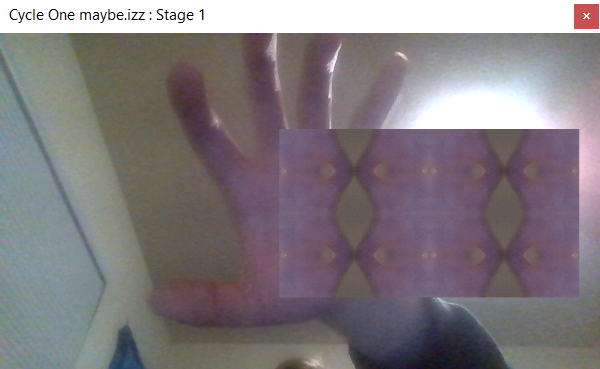
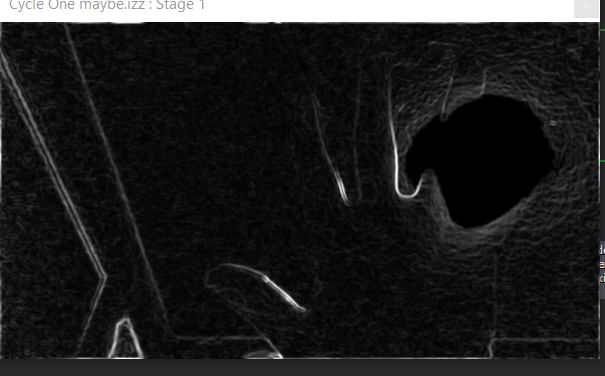
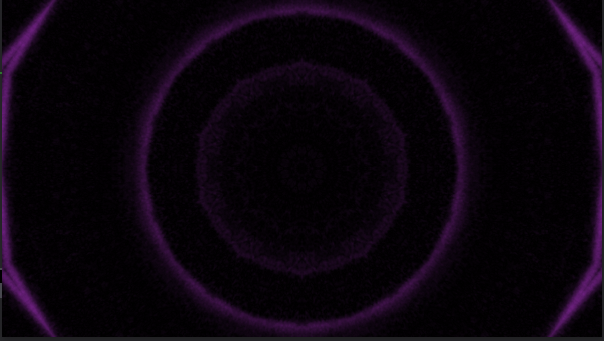
The feedback for the effects that had something that took a bit of time for the user to figure out what was going on was positive. They enjoyed messing around in the camera until they could have a decent idea on how they affect the outcome. The one they thought was lack luster was the one with lines trailing their image. They were able to figure out almost immediately how they affect the image. So, for the next cycle the plan is to update the one effect screen to make it a bit harder to decipher what is going on. Next on the list is to try and get a configuration set up with projectors and projection mapping so the person can be in view of the camera and see what is happening on the screen or projection without blocking the projection or showing up on screen at a weird angle.
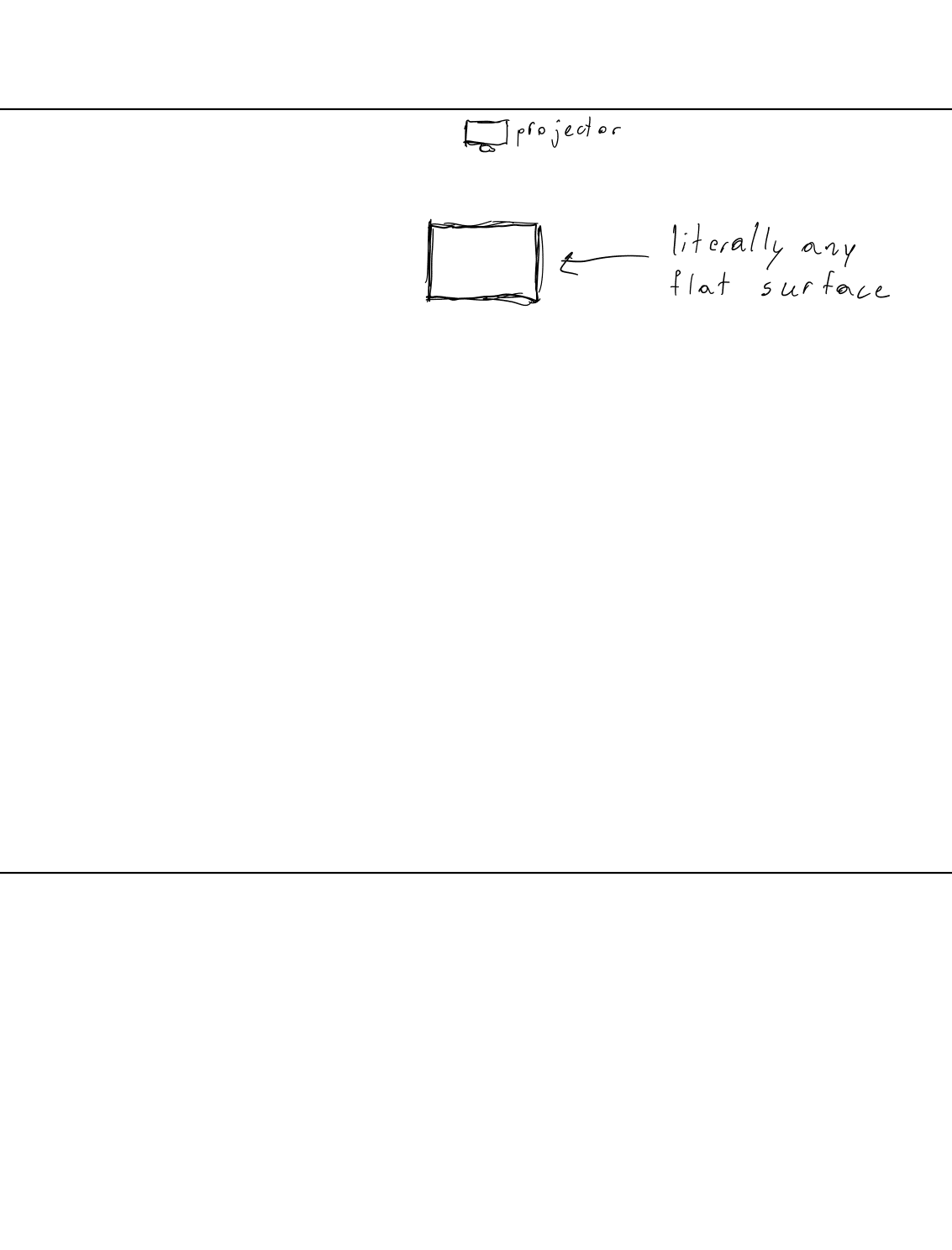
Cycle I: History of Bop
Posted: April 10, 2024 Filed under: Uncategorized | Tags: cycle 1 Leave a comment »Video Bop interpretation of an Excerpt from Jack Kerouac’s ‘History of Bop’
History Of Bop The History of Bop by Jack Kerouac
As a jazz enthusiast and young adult, reading Kerouac’s ‘On The Road’ was a transformative experience. In school, I was predominantly interested in the math and sciences and hardly cared to read a book or pick up a pen to write. However, Kerouac’s style, legacy, and approach to writing (and life for that matter) convinced me of the value in these types of intellectual pursuits. Over the last five years or so, I’ve continued to explore Kerouac and other works from the beat canon; One exciting find was his set of spoken word readings called ‘On the Beat Generation’. For cycle I, I focused on the final minute and a half section from his work ‘History of Bop’. I find this writing to be a triumphant portrayal of the evolution of bebop and cultural changes in America surrounding the genre.
Upon researching the piece, it was interesting to find that it was originally published in the April 1959 issue of an lewd magazine called Escapade – a hidden gem of writing amongst smutty caricatures and 50s advertisements. Although, I was not entirely surprised by this discordant arrangement given that the hero of the beats (Neal Cassady) was, according to Allen Ginsberg, an “Adonis of Denver—joy to the memory of his innumerable lays of girls in empty lots & diner backyards, moviehouses’ rickety rows, on mountaintops in caves or with gaunt waitresses in familiar roadside lonely petticoat upliftings & especially secret gas-station solipsisms of johns, & hometown alleys too”(Howl, 1956). This quality of the beats did not age well especially from the vantage of sexual equality, but unconventional behavior and criticism are the norm for this eclectic group. What I’d call a most foundational criticism of Kerouac and this piece of writing in particular is in the realm of black appropriation. Scholars like James Baldwin described this ‘untroubled tribute to youthful spontaneity [as] a double disservice—to the black Americans who were assumed to embody its spirit of spontaneity and to Kerouac’s full literary achievement… a romantic appraisal of black inner vitality’(Scott Saul, FREEDOM IS, FREEDOM AIN’T, pg 56). It cannot be denied that Kerouac and his writer friends were escaping what they feared as the trap of the middle class white picket fence, and couldn’t have experienced the true reality of being a black in the mid 20th century. Yet, their works speak to a deep respect and profound inspiration for the black art of their time (jazz).
One artistic technique embodied by the beats and inspired from jazz is what Kerouac calls ‘spontaneous prose’. Jazz musicians exceled at this rapid invention of musical structures through heightened sonic sensibility and borderline phantasmal prostheses of an instrument to their nervous systems and soul for that matter. The beats took up this approach with the technology of their time; namely the typewriter. Kerouac even made a manifesto called ESSENTIALS OF SPONTANEOUS PROSE in which he describes the procedure of writing as ‘the essence in the purity of speech, sketching language is undisturbed flow from the mind of personal secret idea-words, blowing (as per jazz musician) on subject of image.’ Other writers of his time, such as Truman Capote, didn’t see eye to eye with this artistic style and humorously commented “That’s not writing, that’s typing.” While I don’t mean to argue that thoroughly edited and fully composed art is better or worse than spontaneous artforms like jazz and bop-prose, it is just that spontaneous modes of creation akin to ‘play’ can potentially more honestly externalize such private and elusive inner processes occurring in the lawless relational environment of the mind.
It has been a good 70 years since these creative practices surfaced within the avant-garde art scene, and the technologies at society’s disposal for externalizing thought have tremendously improved especially due to the massive sea of networked image and video objects available to the average internet user. Further, a concentrated development of skills in computer programming may be analogous to the level of discipline in harnessing artistic technics like the saxophone, piano, pencil, paper, typewriter, voice recorder and so on. With this long winded explanation in mind, these ideas are much the backbone of my inspirations in new media art and what I wish to explore in this 3 cycled project.
In cycle 1, I set out to visualize the final section of history of bop. I’ve listened to this poem recited countless times and did a lyrical transcription – meaning I listened to the recording and wrote out all of its words. This is a common practice among jazz musicians and writers since as it helps internalize language. Next, I followed Dmytro Nikolaiev’s implementation of a Vosk LLM in Python to convert the audio file into a transcribed text JSON file which contained the words and their position in time as spoken.

Not all the words were accurately transcribed so I had to manually correct as AI models are good but not nuanced enough to decipher all spoken phrases especially from an unconventional speaker like Kerouac. Further, I did some post-processing of the data to get it in a form which would play nicely with Isadora’s JSON parser actor. The format involved Key-Value pairs of timestamps and words spoken. Through experimentation, I found that repeating each word in the JSON list near the millisecond (ms) frequency ensured that it would appear onscreen and remain illuminated consistently as the corresponding audio is spoken. I found that although the resolution of the timecode variable of the movie player actor was at the ms scale, it didn’t increment consistently enough to predict the values it would trigger. Consequently, having a large and widespread array of timestamps between the start and end of a word ensures that it will be triggered. Additionally, Isadora plays in the realm of percentages between 0 and 100 rather than the typical format of videos being in time duration. So I had to account for a conversion of timestamp as percent completed with respect to the total length of the audio clip.

This allowed me to funnel the current position of a playing audio file through to the JSON parser actor, such that as the timecode increments, the transcribed text would display onscreen exactly in time with the recited poetry. This was exciting on its own as it was a semi-autonomous method to generating lyric videos. Also, the style of the text was strobe like giving the quality of spoken words – they appear and vanish in an instant. See below the media circuit implemented in Isadora (with image player disabled) to see the flow of time triggering text and subsequently displaying on screen.
The next stage in the process was to find imagery representing the ideas that Kerouac is expressing. Following Kerouac’s ‘Setup’ step: ‘The object is set before the mind, either in reality. as in sketching (before a landscape or teacup or old face) or is set in the memory wherein it becomes the sketching from memory of a definite image-object.’, I used Kerouac’s speaking of the words to serve as the stimulus (object) for mental imagery. Once an image or set of ideas was established in mind through free-association (‘mental image blowing’), I would search Youtube to find a clip which best represented this mental image. Instead of using one of the many available and ad-prone sites for converting Youtube videos to .mp4 files, I adapted a Python script using the yt-dlp/yt-dlp library to do so with better speed and precision. This allowed me to quickly find sections of videos, copy their video url along with start / end time into a function which would download the video file with a specific name to a designated folder. This method allows more mental energy to be concentrated on thinking of images and finding existing internet representations rather than downloading and cutting the video segments. In this way a quick flow can be achieved, better mimicking Kerouac’s spontaneous prose method. To add, just as writing is a negotiation between image thoughts and the language available to one’s tongue and fingers at that moment, video-bop (new term for this method) is a negotiation between a visualized animation and the medium of available images / videos online. This medium includes not only the content available and the form they take, but also the algorithmic recommender process personalized by the user’s previous internet activity. For in this intentionally fast paced creative process, one relies heavily on differentiating search terms to approach on an appropriate visualization.
When videos were found, they were named with the first ‘semi-unique’ word within the phrase they belonged to, and the length of the video was chosen to match the duration of that phrase as calculable from the initial audio transcription step. The grouping of phrases is to the video-bopper’s discretion and in accordance to the aesthetic sensibility eminent in jazz’s musical structuring. It is not necessary to find video images in the order for which they are spoken. I’d hopped around between Kerouac’s phrases freely and would encourage this approach as it may follow the flow of thinking more closely and it builds natural structures of moments and transitions between moments. This idea was neatly phrased by Mark Turner, a modern tenor saxophone player who describes “When I’m in the middle of a solo, whenever I am most certain of the next note I have to play, the more possibilities open up for the notes that follow.”(The Jazz of Physics, Stephon Alexander). To riff on Heisenberg’s uncertainty principle, there is this interdependence on knowing the exactness of both a particle’s momentum and position. To extend this into the domain of thought and artistic expression, perhaps carelessly, it suggests that there is a tradeoff in awareness. When the improvisor’s awareness is tuned most closely to what idea should come next, they may be unaware of the larger artistic structure to emerge. In contrast, if the improvisor’s awareness is tuned to larger timespans and movements in the piece, they may have less awareness of the idea to come next.
As a continuation on methodology, Isadora unfortunately doesn’t read file-paths for media artifacts and rather relies on an internal numbering system as files are uploaded to the project. To accommodate this structure, I manually updated a JSON object to convert between video trigger words and their index in Isadora. These index values are passed into Isadora’s movie player object to allow them to be visualized in time with the typography and spoken words.

Upon showing the project to my classmates and delving into ideas on how it can be more interactive for cycle’s 2 and 3 to come, many important suggestions were accumulated to form the next direction:
- Jiang – Words that are action oriented may be good to include for transitions of images. (ie ‘turn’).
- Afure – She liked my interpretation of word ‘Dreaming’ – Although, everyone would have a different interpretation of that word and what img they’d select.
- Tik Tok Trend for going on Pinterest and searching words and displaying what image that is algorithmically connected with.
- Kiki – Liked the subject matter – she teaches jazz dance and it would be helpful to have a more interesting way to teach about the this genre.
- Alex – ways for interactivity – what sorts of ways to automate img generation and allow for user thoughts / personalities to be included. Potential for a custom web-app.
- Nathan – would like to have clicked on links related to the content being shown. As a way to learn more about each part (as informative).
With these suggestions in mind, I plan to explore the use of Dispatcher — python-osc 1.7.1 documentation to build a simple server hosted web interface open to smart-device users connected to a LAN. A spoken word poem should be found and disseminated to each of the audience’s device surfaces. As an experience, there should be a listening period in which the audience engages with their own forms of active imagination to see what phrases catch their ears and images that become naturally available to them. From there, they should go through the video-bop process and find a clip which matches what they’ve concepted. Then they will connect to the media server and paste the link of that video, the start and end time, as well as the phrase it connects to. The media server will need to collect these audience responses and run the Youtube extraction script to grab all the associated artifacts and make them available for rendering in time with the spoken word poetry. This is the direction I envision for cycle two and a diagram of how I see the interaction occurring:
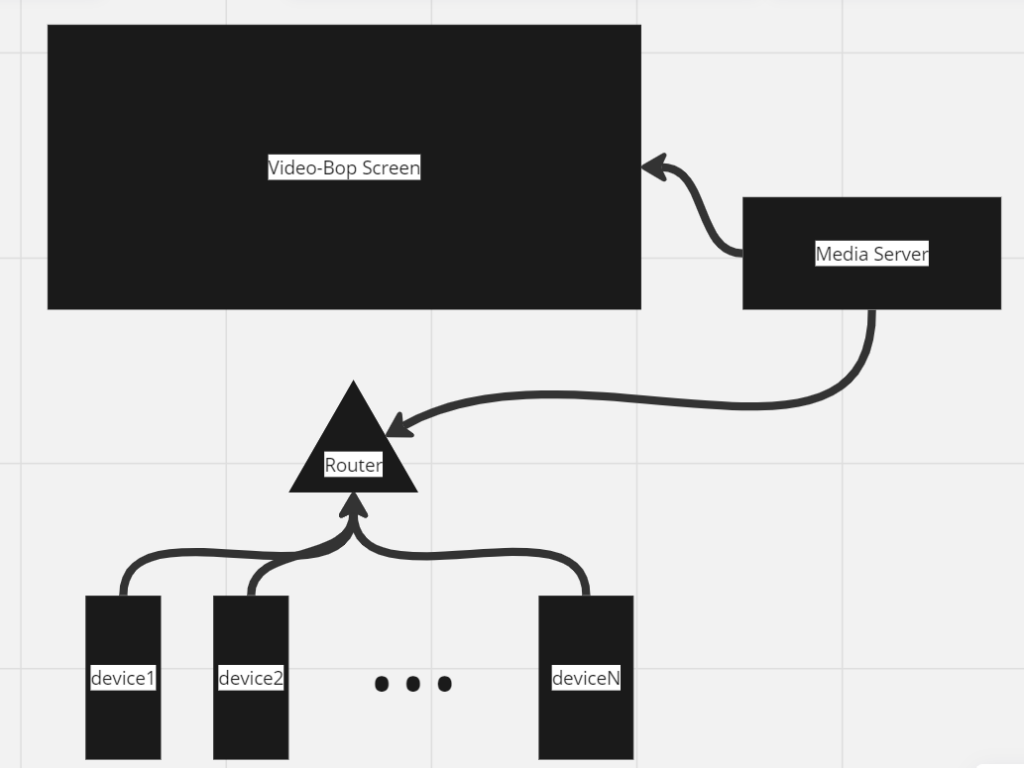
Lawson: Cycle 1
Posted: November 14, 2023 Filed under: Nico Lawson, Uncategorized | Tags: cycle 1, dance, Interactive Media, Isadora Leave a comment »My final project is yet untitled. This project will also be a part of my master’s thesis, “Grieving Landscapes” that I will present in January. The intention of this project is that it will be a part of the exhibit installation that audience members can interact with and that I will also dance in/with during the performances. My goal is to create a digital interpretation of “water” that is projected into a pool of silk flower petals that can then be interacted, including casting shadows and reflecting the person that enters the pool.
In my research into the performance of grief, water and washing has come up often. Water holds significant symbolism as a spirit world, a passage into the spirit world, the passing of time, change and transition, and cleansing. Water and washing also holds significance in my personal life. I was raised as an Evangelical Christian, so baptism was a significant part of my emotional and spiritual formation. In thinking about how I grieve my own experiences, baptism has reemerged as a means of taking control back over my life and how I engage with the changes I have experienced over the last several years.
For cycle 1, I created the Isadora patch that will act as my “water.” Rather than attempting to create an exact replica of physical water, I want to emphasis the spiritual quality of water: unpredictable and mysterious.
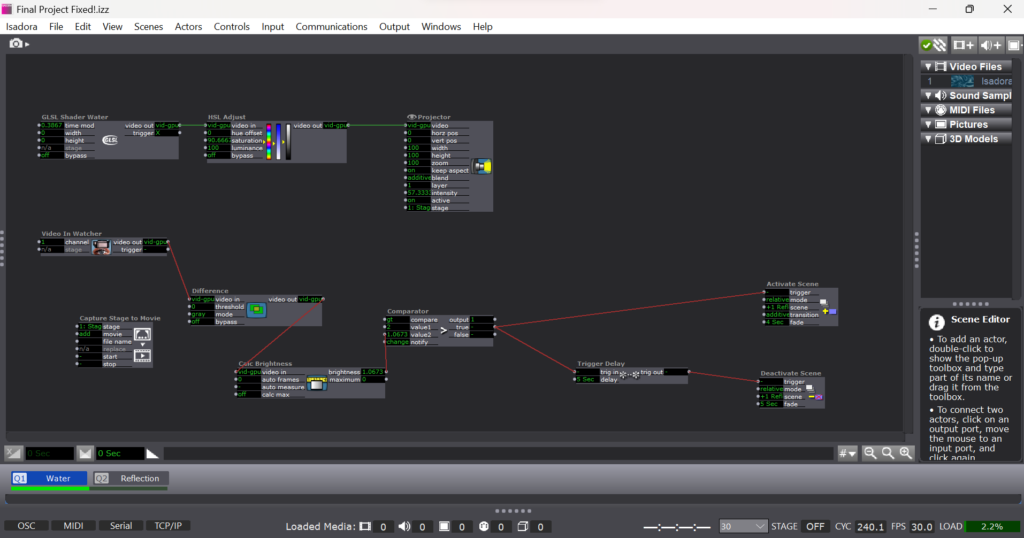
To create the shiny, flowing surface of water, I found a water GLSL shader online and adjusted it’s color until it felt suitably blue: ghostly but bright, but not so bright as to outshine the reflection generated by the web cam. To emphasize the spiritual quality of the digital emanation, I decided that I did not want the watch to be constantly projecting the web cam’s image. The GLSL shader became the “passive” state of the patch. I used difference, calculate brightness, and comparater actors with active and deactive scene actors to form a motion sensor that would detect movement in front of the camera. When movement is detected, the scene with the web cam projection is activated, projecting the participant’s image over the GLSL shader.
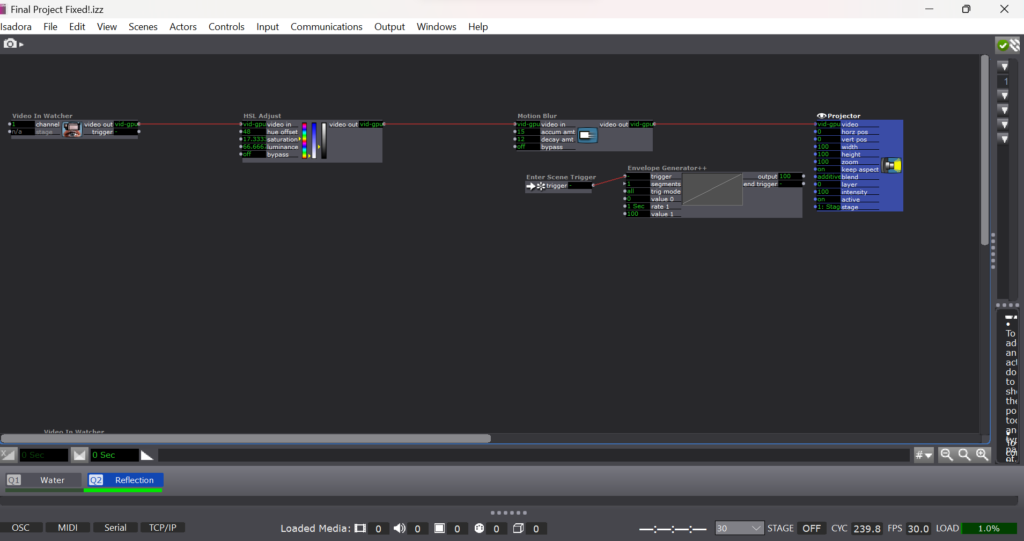
To imitate the instability of reflections in water I applied a motion blur to the reflection video. I also wanted to imitate the ghostliness of reflections in water, so I desaturated the image from the camera as well.

To emphasize the mysterious quality of my digital water, I used an additional motion sensor to deactivate the reflection scene. If the participant stops moving or moves out of the range of the camera, the reflection image fades away like the closing of a portal.
The patch itself is very simple. It’s two layers of projection and a simple motion detector. What matters to me is the way that this patch will eventually interact with the materials and how the materials with influence the way that the participant then engages with the patch.
For cycle 2, I will projection map the patch to the size of the pool, calibrating it for an uneven surface. I will determine what type of lighting I will need to support the web camera and appropriate placement of the web camera for a recognizable reflection. I will also need to recalibrate the comparater for a darker environment to keep the motion sensor functioning.